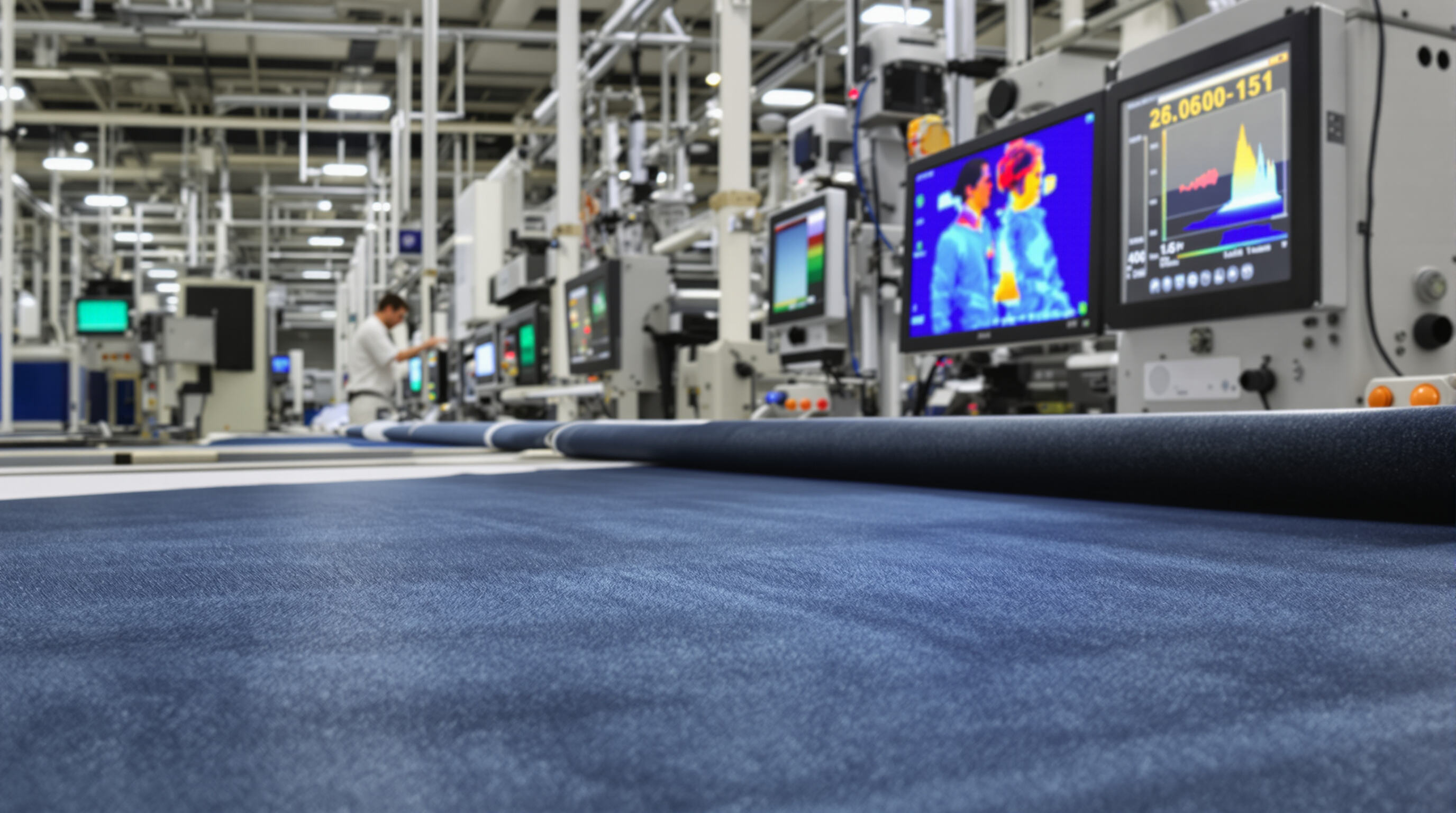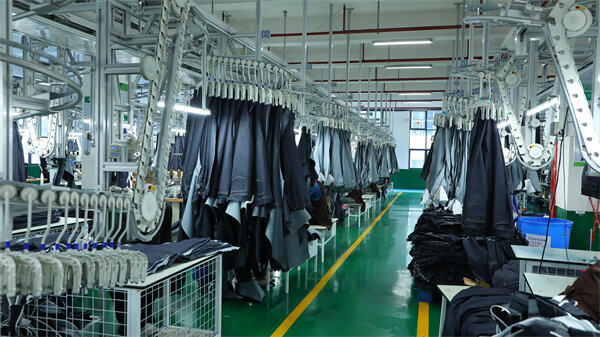Raw Material Selection and Yarn Quality Assurance
Fibre Quality Assessment for Cotton and Blended Yarns
Quality checks start right at the fiber stage for denim manufacturers who look at things like cotton's micronaire value, how long the staples are, and whether the fibers are mature enough. They use fancy equipment to check what percentage of synthetics like polyester is mixed into the cotton blends so they can get just the right stretch without sacrificing strength. A recent paper from Natural Fibers Towards Fashion Sustainability mentions something interesting too. When cotton fibers measure over 28mm in length, this actually makes the yarn smoother during production, which boosts denim durability by around 18%. That kind of detail matters when making jeans that will last through countless washes and wears.
Testing Yarn Strength, Evenness, and Twist Consistency
Industrial Uster Testers measure critical parameters: strength (cN/tex), unevenness (CV%), and twist-per-meter consistency. Mills follow ASTM D2256 standards, rejecting yarns with less than 12% elongation or excessive hairiness. Research shows that optimal twist levels (650-720 TPM) increase warp abrasion resistance by 15-20% in recycled cotton blends.
Supplier Audits and Sustainable Sourcing Practices in Denim Mills
Top mills conduct annual supplier audits assessing farming methods, water use, and chemical management. Over 78% now trace cotton via blockchain from farm to spinning, ensuring transparency. Third-party certifications like BCI (Better Cotton Initiative) have reduced pesticide use by 41% since 2020 while maintaining high fiber quality standards.
In-Process Quality Control from Spinning to Weaving
Denim mills implement rigorous checks across production stages to ensure fabric integrity without sacrificing efficiency.
Process monitoring from spinning to dyeing and weaving
Automated optical sensors monitor fiber alignment during carding and blending, ensuring uniformity before spinning. Hourly strength tests using ASTM D5034 protocols are standard, with 98.6% of mills rejecting yarn batches showing over 15% variation in twist density.
Implementation of integrated quality control systems in denim mills
Modern ERP platforms integrate data from 8-12 key checkpoints, including moisture levels during dyeing (±2% tolerance), loom tension sensors (threshold: 0.2 defects/sq. meter), and GSM variance alerts (<5% deviation from target weight), enabling proactive corrections.
Real-time data tracking using IoT-enabled machinery
Wi-Fi-connected Rapier looms transmit more than 120 data points per minute, such as weft insertion speed and air pressure:
| Metric | Target Range | Alert Threshold |
|---|---|---|
| Weft insertion speed | 800-850 rpm | <780 or >870 rpm |
| Air pressure | 0.45-0.55 bar | ±0.08 bar |
This real-time monitoring enables defect resolution 67% faster than manual systems (Textile Institute 2023).
Balancing speed and precision in mass production
Advanced tension control maintains less than 3% elongation variance across 300-meter fabric runs, supporting production speeds up to 35 meters/minute while meeting ISO 6330 shrinkage requirements. Mills combining AI with human inspection report 92% fewer customer returns due to weaving flaws.
Color Consistency and Dye Management in Denim Production
Spectrophotometers for Colour Matching and Batch Uniformity
Spectrophotometers ensure color consistency across batches by measuring reflectance values, compensating for natural fiber variations. When dyeing indigo on cotton-elastane blends, these systems achieve ΔE values ⤠1.5 (CIE Lab), making shade differences imperceptible to the human eye.
Indigo Dye Concentration Control and Vat Management
Automated titration systems maintain ideal pH (10.5-12.5) and redox potential (-700mV to -750mV) in indigo vats, minimizing leuco-indigo oxidation. This reduces dye bath replenishment frequency by 30% compared to manual processes and ensures compliance with ISO 105-B02 colorfastness standards.
Colourfastness Testing Under Light, Washing, and Rubbing Conditions
Labs simulate five years of wear using Xenon-arc testing (ISO 105-B04) and Martindale abrasion machines. Untreated stretch denim shows 15% higher color loss during crocking tests; however, cationic dye fixation improves wet rub fastness from Grade 2 to Grades 4-5 on the AATCC Gray Scale.
Case Study: Reducing Color Variation in Stretch Denim Batches
A manufacturer cut shade variation by 40% across 15,000 meters of stretch denim through three key actions: real-time spectrophotometry feedback, standardized elastane pre-treatment, and statistical process control for dye bath management. The $2.3M investment delivered ROI within 14 months via fewer remakes and improved fulfillment of premium orders.
Fabric Inspection, Defect Detection, and Durability Testing

Automatic Fabric Inspection Machines vs. Manual Grading
Automated systems scan 60-100 meters per minute using multi-spectral imaging, far surpassing manual graders’ 15-20 meter capacity. While machines detect measurable flaws like broken warps with under 0.1% error, expert inspectors remain essential for identifying subtle texture issues in premium selvedge denim.
Common Defects in Denim: Slubs, Holes, Misweaves, and Dye Streaks
Structural flaws cause 73% of denim rejections (Textile Quality Journal 2023), with slub variations accounting for 22% of downgraded batches. Defect detection rates vary significantly between manual and AI-based systems:
| Defect Type | Manual Detection Rate | AI Detection Rate |
|---|---|---|
| Dye streaks | 68% | 94% |
| Misweaves | 82% | 99.5% |
| Micro-holes | 41% | 88% |
Integration of AI-Powered Vision Systems for Real-Time Flaw Detection
An AI-powered inspection study demonstrated a 53% reduction in denim waste through immediate defect identification. These systems analyze over 16,000 weave patterns per second and automatically adjust looms to prevent recurring errors.
Tensile Testing for Warp and Weft Strength Measurement
Using ASTM D5034 (2021), mills verify that warp yarns withstand at least 1,200N of force—essential for stretch denim performance. Industry-wide, weft strength thresholds have risen 18% since 2020 to support heavier selvedge constructions.
Abrasion Resistance, Pilling Evaluation, and Impact of Elastane on Longevity
Tests done by outside labs show that jeans containing more than 3% elastane lose around 40% of their ability to resist wear after just 50 washes (normal benchmark is Martindale rating above 20,000 cycles). Fabric manufacturers are starting to tackle this problem by using enzyme treatments that actually damage fibers 34% less compared to traditional stone washing methods. They're also incorporating 3D friction maps to spot where clothes tend to wear out first. Putting all these techniques together has helped cut down on returned products after manufacturing by nearly a third across popular clothing lines.
Dimensional Stability, Shrinkage Control, and Chemical Compliance
Denim mills enforce strict protocols to minimize shrinkage and meet global regulatory standards. Post-wash dimensional stability is evaluated using ISO 6330-compliant laundering cycles that simulate consumer conditions. Sanforization technologies reduce residual shrinkage to below 1.5%, with some producers achieving “zero-shrink†performance through precise tension control during pre-treatment.
Safety when it comes to chemicals remains a top priority these days. Independent testing facilities check fabrics for harmful substances such as azo dyes, which need to be below 0.03 parts per million, and formaldehyde levels must stay under 20 ppm according to ISO 14184-1 standards. The numbers tell the story too - around 78% of denim producers are focusing on getting their products certified by OEKO-TEX® while also following REACH guidelines to keep up with increasingly strict rules from Europe and North America. When it gets down to final checks, they use what's called AQL sampling methods. If there's more than 2.5% defects found in a batch of 2,500 meters long fabric, then something needs fixing right away. These quality control measures actually match up with ASTM D5430 requirements that test how durable textiles really are over time.
FAQ
What is the significance of fiber quality in denim production?
Fiber quality is crucial as it affects yarn smoothness and denim durability. For example, cotton fibers over 28mm in length can increase denim durability by about 18%.
How do denim mills ensure color consistency?
Denim mills use spectrophotometers to ensure color consistency, achieving ΔE values ≤ 1.5, making shade differences imperceptible to the human eye.
What role does AI play in denim fabric inspection?
AI-powered inspection systems reduce denim waste by quickly identifying defects. These systems can analyze over 16,000 weave patterns per second.
Table of Contents
- Raw Material Selection and Yarn Quality Assurance
- In-Process Quality Control from Spinning to Weaving
- Color Consistency and Dye Management in Denim Production
-
Fabric Inspection, Defect Detection, and Durability Testing
- Automatic Fabric Inspection Machines vs. Manual Grading
- Common Defects in Denim: Slubs, Holes, Misweaves, and Dye Streaks
- Integration of AI-Powered Vision Systems for Real-Time Flaw Detection
- Tensile Testing for Warp and Weft Strength Measurement
- Abrasion Resistance, Pilling Evaluation, and Impact of Elastane on Longevity
- Dimensional Stability, Shrinkage Control, and Chemical Compliance
- FAQ

